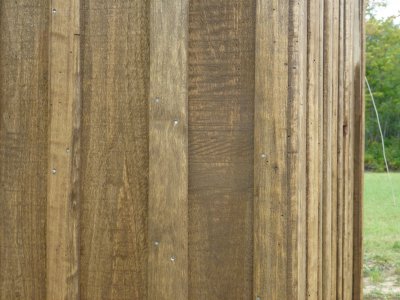- Joined
- Nov 25, 2015
- Messages
- 8,314
I wasn't degrading myself, just saying that as a sawyer, you know things that I don't. They are two different disciplines. so I was putting my statements into perspective. Just wanted to help, but not seem like the expert...
Also many here don't deal with wood regularly, so want to make sure others understand green wood shrinks. Bryan Bloc (youtuber) who has rebuilt a barn didn't realize this when he used green wood as clapboard.. it shrunk and he had gaps...so while he looked like he knew what he was doing, he didn't understand the amount of shrink. I tried warning him, but I was too late the videos are made way before you see them...... He did a great job on the barn, better than I could do.. way better. But he didn't know about the amount of shrinkage.
I watch the humidity in my shop as I work... it's important to know where my wood is at the moment. I prefer air dried to kiln dried. Even for furniture. Sometimes it has less stresses. Kiln drying is usually ok, but sometimes it's done poorly.
Anyway just didn't want to seem like I knew more, when I know my woodworking, but not what you do in cutting logs up.
Also many here don't deal with wood regularly, so want to make sure others understand green wood shrinks. Bryan Bloc (youtuber) who has rebuilt a barn didn't realize this when he used green wood as clapboard.. it shrunk and he had gaps...so while he looked like he knew what he was doing, he didn't understand the amount of shrink. I tried warning him, but I was too late the videos are made way before you see them...... He did a great job on the barn, better than I could do.. way better. But he didn't know about the amount of shrinkage.
I watch the humidity in my shop as I work... it's important to know where my wood is at the moment. I prefer air dried to kiln dried. Even for furniture. Sometimes it has less stresses. Kiln drying is usually ok, but sometimes it's done poorly.
Anyway just didn't want to seem like I knew more, when I know my woodworking, but not what you do in cutting logs up.


 I see on E-Bay that a 5 gallon can of
I see on E-Bay that a 5 gallon can of
